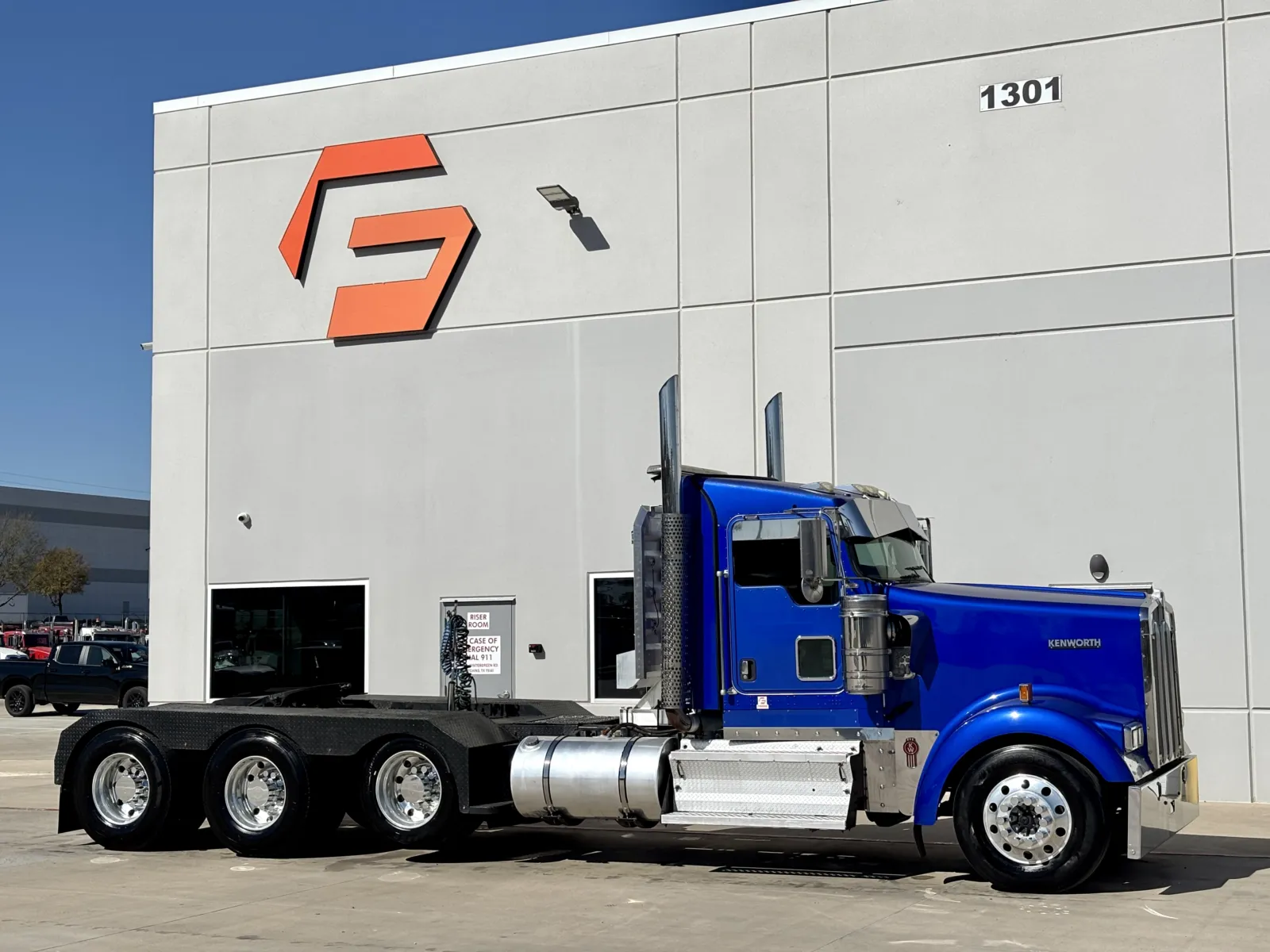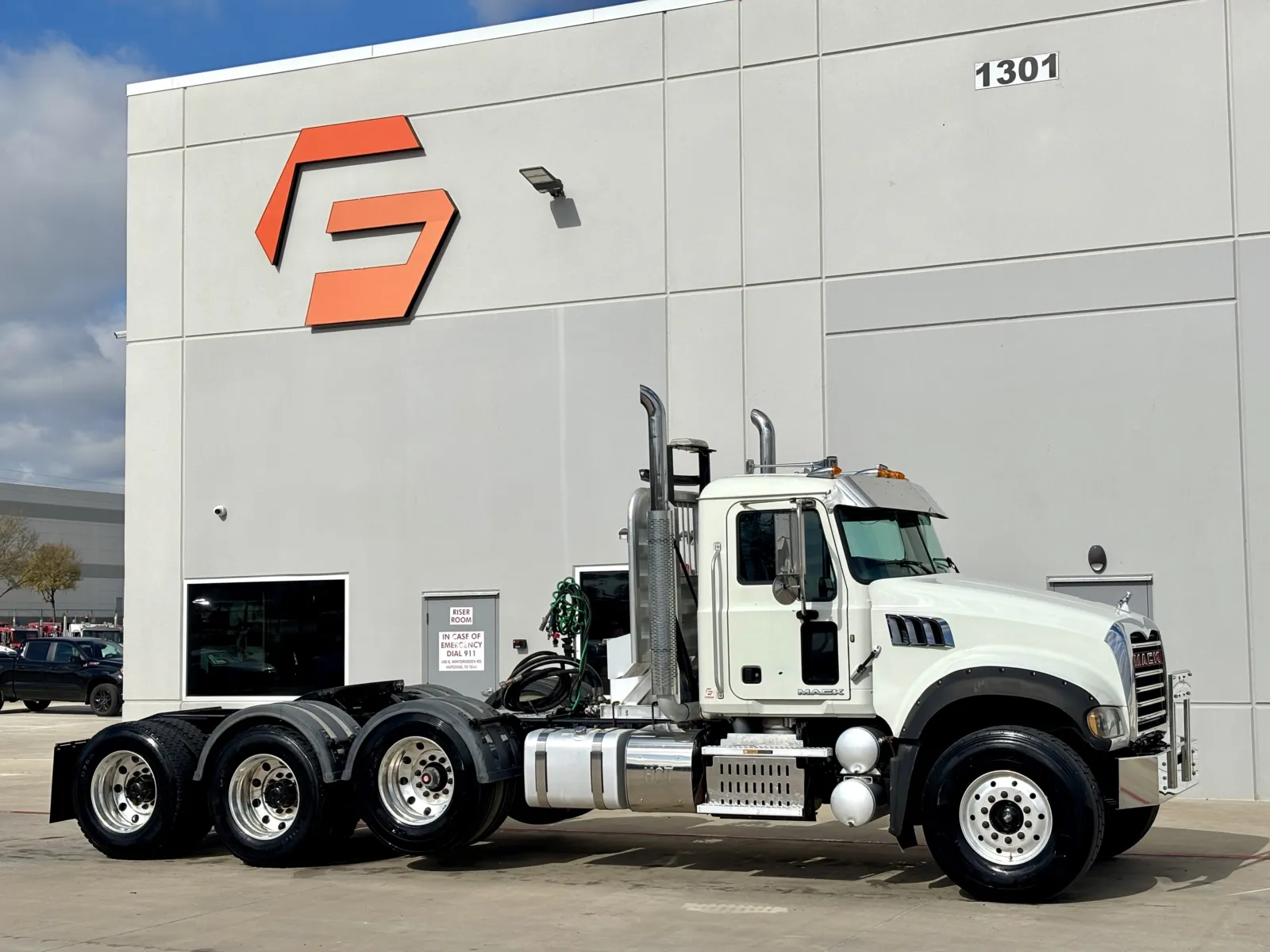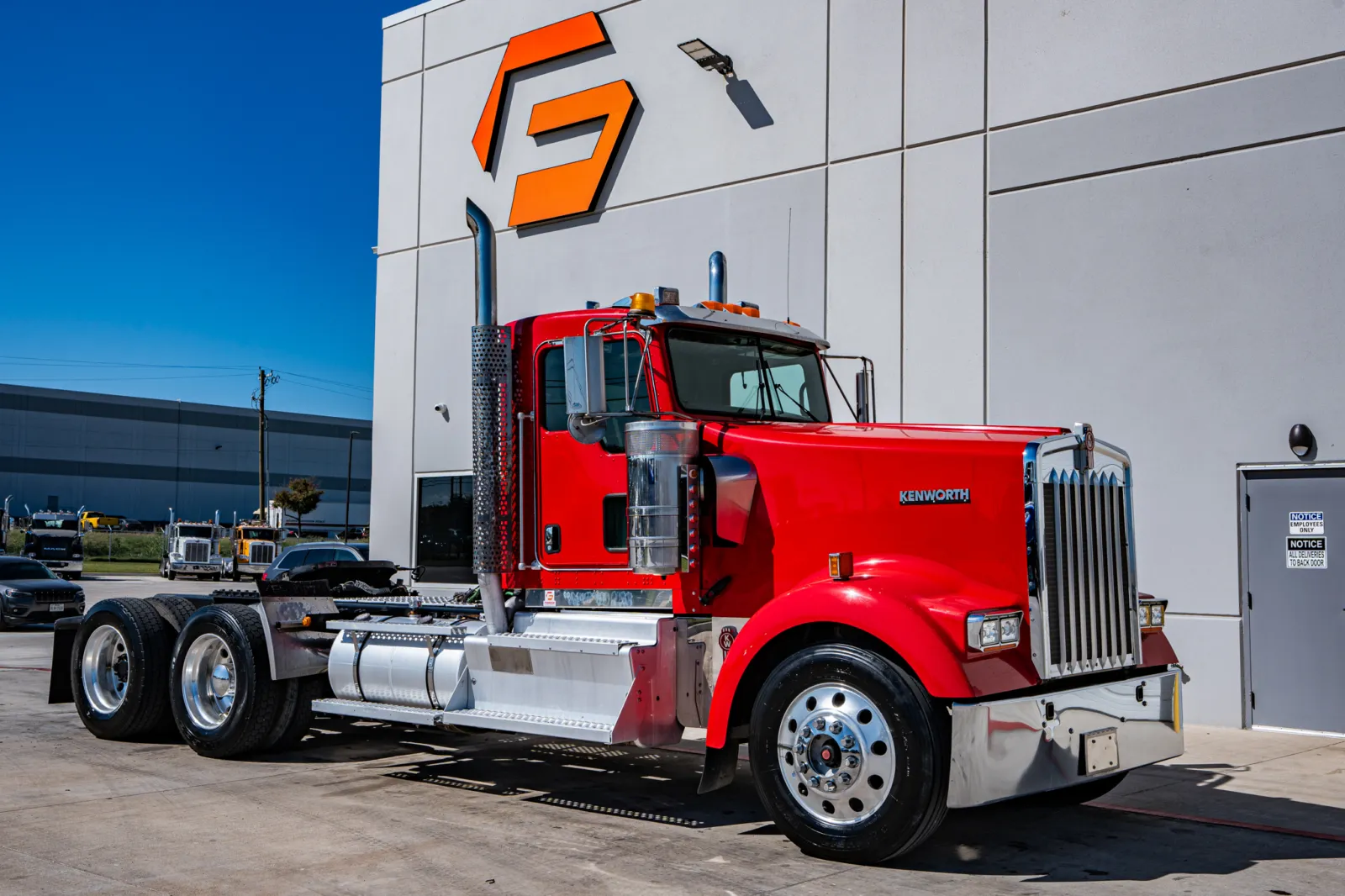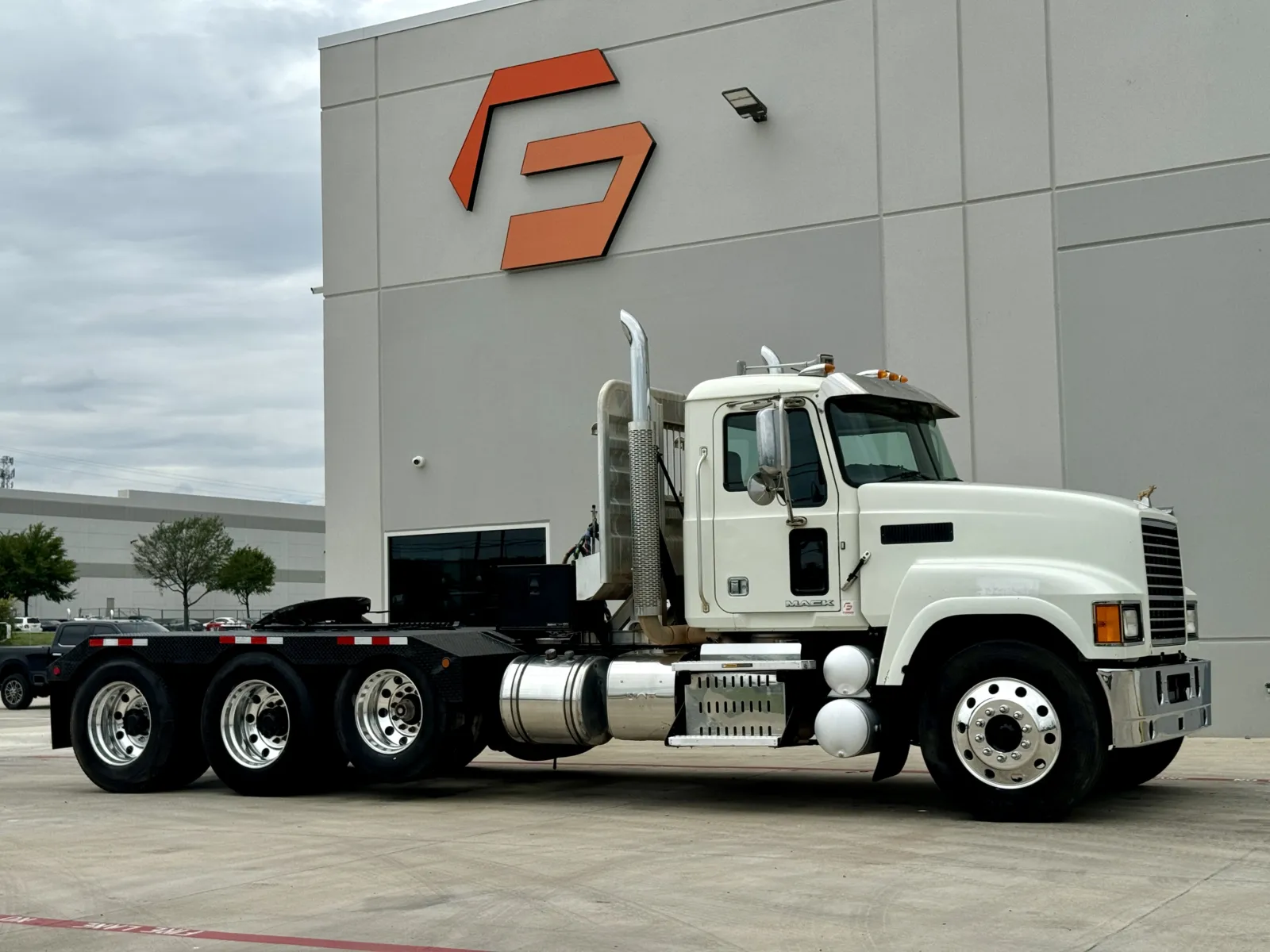What Is a Pusher Axle and When Should You Add One?
Table of Contents
- Key Takeaways
- What Is a Pusher Axle?
- How a Pusher Axle Works
- Pusher Axle vs. Tag Axle
- When Should You Add a Pusher Axle?
- How a Pusher Axle Affects Legal Weight Limits
- Common Truck Types That Use Pusher Axles
- Advantages of Adding a Pusher Axle
- Maintenance and Operation Tips
- When to Avoid Adding a Pusher Axle
- Forge Truck Centers: Your Partner for Vocational Upfitting
Key Takeaways
- A pusher axle is an additional axle installed in front of the drive axles to increase a truck’s legal weight capacity and improve load distribution.
- Adding a pusher axle helps you legally haul heavier loads, reduce tire and suspension wear, and improve stability.
- The right time to add a pusher axle depends on your gross weight needs, state bridge laws, and axle spacing requirements.
What Is a Pusher Axle?
A pusher axle—sometimes called a lift axle—is a non-driven axle mounted ahead of the truck’s drive axles. It can be raised or lowered depending on whether additional load capacity is needed.
When deployed, it helps distribute the truck’s total weight more evenly across the frame, allowing you to legally carry heavier loads without exceeding per-axle weight limits. When not needed, it can be lifted off the ground to save tire wear and fuel.
Pusher axles are typically found on dump trucks, concrete mixers, roll-offs, and other vocational trucks that operate with heavy or shifting payloads.
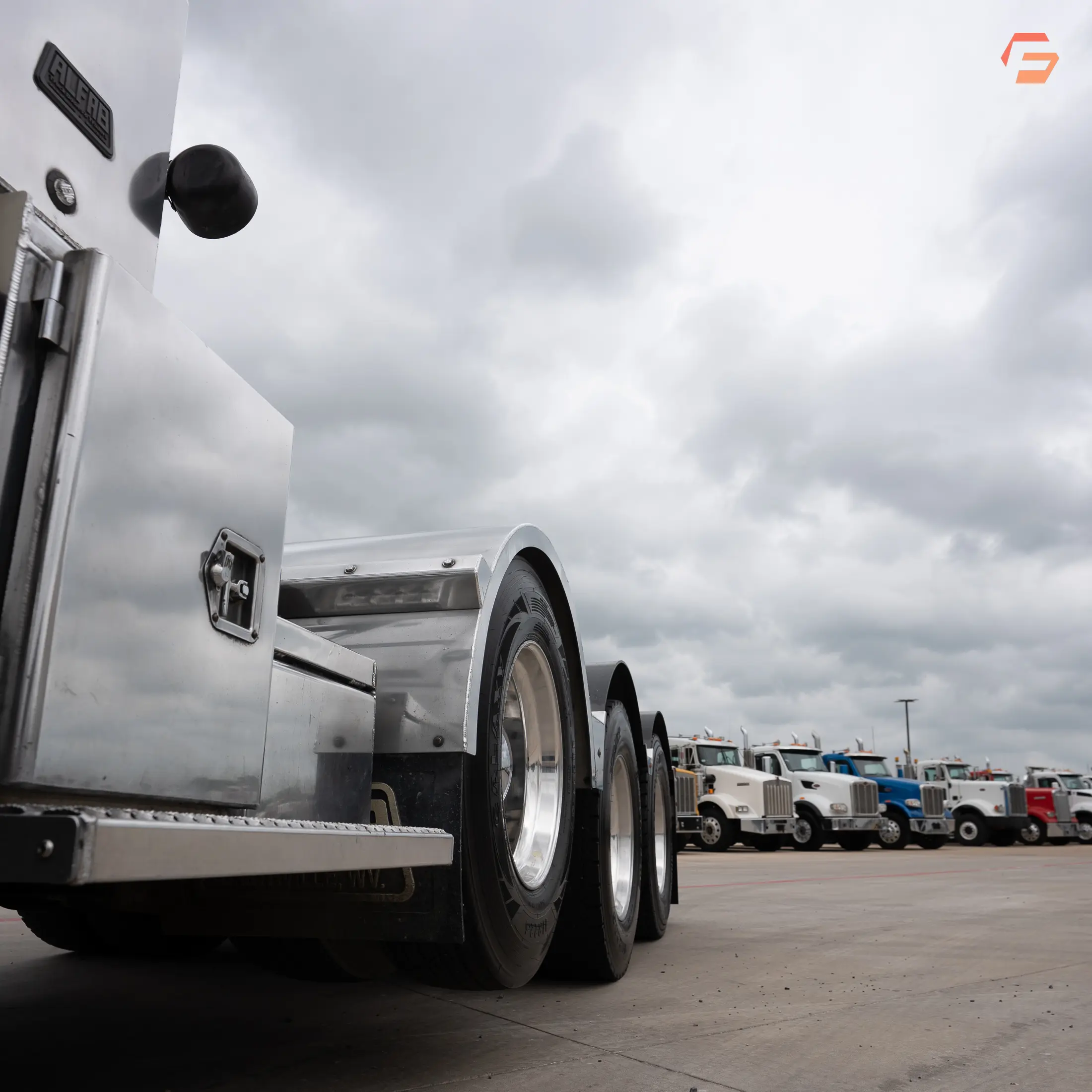
How a Pusher Axle Works
The pusher axle connects to the truck’s suspension system and uses an air-operated control to raise or lower the tires. When activated, air pressure pushes the tires down to the ground, transferring some of the truck’s load off the rear axles.
Here’s what happens when you engage it:
- The air system inflates the pusher’s air bags.
- The axle lowers, contacting the road surface.
- Part of the truck’s load shifts forward onto the pusher axle, balancing the total weight distribution.
When the truck is unloaded or carrying a lighter load, the driver can lift the pusher axle to reduce drag and tire wear.
Pusher Axle vs. Tag Axle
It’s easy to confuse the two, but their positions differ:
- A pusher axle is located in front of the drive axles.
- A tag axle is mounted behind the drive axles.
Both serve to increase legal carrying capacity, but each affects handling differently.
- Pusher axles move the load forward, increasing weight on the steer axle and improving stability.
- Tag axles move the load rearward, which can slightly reduce steering traction but is useful for balancing long trailers or equipment bodies.
For most dump trucks, concrete mixers, and vocational haulers, a pusher axle is preferred because it keeps the load centered and helps maintain better steering response when fully loaded.
When Should You Add a Pusher Axle?
If your truck regularly operates near or above legal gross weight limits, adding a pusher axle may be the best way to stay compliant and extend the life of your equipment.
Here are key scenarios where it makes sense:
- You’re Exceeding Legal Weight Limits
- Each state enforces specific weight limits per axle and overall gross weight.
- By adding a pusher axle, you can legally increase your Gross Vehicle Weight Rating (GVWR) and reduce fines for overloading.
- Your Loads Are Heavy but Not Constant
- If you sometimes haul heavy materials (like aggregates or asphalt) but run empty on return trips, a liftable pusher axle gives flexibility—load-bearing when needed, raised when not.
- You Want to Reduce Maintenance Costs
- Distributing weight across more axles reduces stress on suspensions, brakes, and tires.
- This means less downtime and longer component life.
- You Need Better Stability Under Load
- Pusher axles shift weight forward, improving front-end traction and overall truck handling—especially important in uneven or soft terrain common on job sites.
- You’re Spec’ing a New Vocational Truck
- If you’re ordering a truck for dump, roll-off, or construction use, adding a factory-installed pusher axle can save cost and downtime compared to retrofitting one later.
How a Pusher Axle Affects Legal Weight Limits
Adding a pusher axle increases how much weight your truck can carry—legally and safely—because it spreads the load across additional contact points.
For example:
- A typical tandem dump truck with two rear axles can legally gross around 54,000 lbs (depending on state).
- Adding a properly spaced pusher axle can raise that limit to 60,000 lbs or more, depending on bridge laws.
These laws determine how weight is distributed along the truck’s wheelbase and how many axles are supporting it. The more axles you have—within proper spacing—the more weight you can carry legally.
Always verify local bridge formulas and state DOT regulations before adding or operating with a pusher axle.
Common Truck Types That Use Pusher Axles
Dump Trucks
Add a pusher axle to maximize payload for aggregate or construction materials while staying under per-axle limits.
Concrete Mixers
Heavy rotating drums and shifting loads make an extra axle essential for balance and stability.
Roll-Off Trucks
When lifting and hauling large containers, pusher axles help spread the concentrated weight load evenly.
Oilfield and Utility Trucks
Heavy equipment, cranes, or tanks mounted to the chassis benefit from the added support of a pusher axle.
Lowboy or Heavy-Haul Rigs
Operators running detachable trailers sometimes add pushers to help meet bridge weight formulas or handle high pin weights.
Advantages of Adding a Pusher Axle
Increased Legal Payload: Boosts gross vehicle weight without overloading existing axles.
Reduced Tire Wear: Distributes pressure evenly across more tires.
Extended Suspension Life: Prevents overloading on rear tandems.
Improved Steering Stability: Keeps the truck balanced under heavy loads.
Fuel Efficiency When Unloaded: Lift the axle to reduce rolling resistance.
Lower Risk of Fines: Ensures compliance with federal and state axle-weight laws.
Maintenance and Operation Tips
Inspect Air Systems:
Keep airbags, lines, and valves in good condition—air leaks can cause uneven axle deployment.
Check Tire Wear Patterns:
Uneven tire wear may indicate improper air pressure or alignment.
Monitor Axle Lift Controls:
Ensure the switch functions properly and that the axle raises fully when disengaged.
Grease and Inspect Regularly:
Suspension bushings and pivot points need consistent lubrication to prevent binding.
Stay Compliant:
Know your state’s weight and spacing laws—some regions limit the number of lift axles or how they can be used.
When to Avoid Adding a Pusher Axle
In some cases, a pusher axle may not be the right solution. For instance:
- If your truck already runs near the legal bridge-length limit, adding another axle may not help.
- If your payloads are consistently light, a pusher adds unnecessary weight and maintenance.
- If you primarily operate off-road, consider the impact of reduced maneuverability or frame length.
Before installation, it’s best to consult with a qualified dealer or equipment specialist who can evaluate your truck’s frame, suspension type, and expected loads.
Forge Truck Centers: Your Partner for Vocational Upfitting
At Forge Truck Centers, we specialize in trucks built for work. From dump and roll-off trucks to heavy-haul tractors, we help owner-operators and fleets set up their equipment for maximum performance and compliance.
If you’re considering adding a pusher axle—or buying a truck already equipped with one—our team can:
- Evaluate your truck’s configuration and GVWR potential.
- Recommend the correct axle spacing and suspension type.
- Install or service lift axles to factory-level standards.
- Ensure full compliance with local weight laws.
We carry a wide range of used Peterbilt, Kenworth, Mack, and Western Star trucks—many already equipped with lift axles—and can help customize your next unit for any job.
A pusher axle might look like a simple add-on, but it’s a powerful upgrade for trucks that carry serious weight. By increasing your legal payload, improving handling, and extending the life of your suspension, a properly installed pusher axle helps you haul more and earn more—while staying compliant on every load.
Whether you’re upgrading an existing truck or spec’ing your next one, the team at Forge Truck Centers can help you choose the right setup for your operation.


